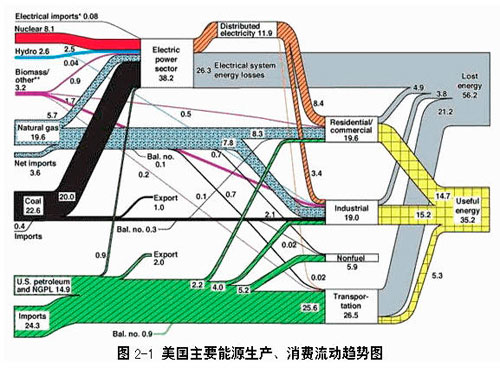 Energy, as the basic resource for human survival and social development, is the basic material guarantee for economic and social development. It is both an economic resource and a strategic resource and a political resource. At present, the energy structure with fossil energy as the main form will be subject to the double challenge of energy depletion and greenhouse gas emissions. In the future, the energy structure will be mainly based on fossil energy and will gradually be transformed into renewable energy. How to achieve this transformation is The major issues facing humanity are also the ultimate goal of the development of smart grids. Starting from the requirements for future energy development, this paper proposes the goals, mission and social attributes of the smart grid, describes the basic principles and main applications of the smart grid, and the role of information and communication technologies.
Energy, as the basic resource for human survival and social development, is the basic material guarantee for economic and social development. It is both an economic resource and a strategic resource and a political resource. At present, the energy structure with fossil energy as the main form will be subject to the double challenge of energy depletion and greenhouse gas emissions. In the future, the energy structure will be mainly based on fossil energy and will gradually be transformed into renewable energy. How to achieve this transformation is The major issues facing humanity are also the ultimate goal of the development of smart grids. Starting from the requirements for future energy development, this paper proposes the goals, mission and social attributes of the smart grid, describes the basic principles and main applications of the smart grid, and the role of information and communication technologies. Future Energy Development Energy is an important material foundation for human survival and development. Throughout the history of human society development, every major advancement in human civilization has been accompanied by the improvement and replacement of energy. Over the past one hundred years, humankind has experienced three distinct stages from traditional renewable energy and fuelwood, coal, and petroleum, and will enter a new era of new energy and renewable energy utilization in the future (Figure 1-1, Figure 1-2).
As more and more people use energy, especially fossil energy, the constraints of energy on the economic and social development of human beings become more prominent, the impact on the natural environment on which they are living is also increasing, and mineral energy will eventually be consumed. People began to research and use wind energy, solar energy, ocean energy, biomass energy, and geothermal energy. In 2004, the European Joint Research Center (JRC) predicted the total energy demand and structural changes in the coming 100 years based on the development potential of various energy technologies and their resource levels: the proportion of renewable energy will continue to rise, 2020, 2030. , 2040, 2050 and 2100 will reach 20%, 30%, 50%, 62% and 86% respectively. Among them, the proportion of solar energy in the future energy structure will increase.
Figure 1-3 Forecast of structural changes in the world's future energy demand In the history of energy development, the proportion of new energy sources in total energy supply has risen from 1% to 50%. The replacement cycle takes an average of 100 years. The construction period of large-scale energy systems generally takes 20-30 years, and the period from the start of research to extension and application of new energy will take 30-50 years. Many countries and regions regard renewable energy as an important part of their energy development strategy. More than 30 developed countries and more than 100 developing countries have formulated national renewable energy development goals to promote the development of renewable energy and eventually replace conventional fossil fuels. Facing such a change in energy structure and form, it will lead to a series of economic and social changes. Therefore, it is necessary to have a long-term view to solve the problem of structural adjustment and transformation of energy sources. To face the future development of energy sources, we must thoroughly analyze the problems existing in traditional power grids, and study and explore methods and approaches for solving problems.
The key problem of the traditional power grid The traditional power grid (or power system) is a single-flow power supply mode of “power generation, transmission, distribution, and power supplyâ€. The basic goal is to produce and use electric energy, which is a large amount of electricity in an industrialized society. The basis for production and mass consumption is also a concrete manifestation of the economies of scale of the industrial economy. In the planning and design of electricity, starting from the power load demand and primary energy production, research and determination of power points, transmission paths, transmission capacity and voltage levels, and grid structure, etc., seldom consider the energy on the demand side. Use issues. During the entire energy production, supply, and consumption by end-users, 56.2% of energy was wasted, and there was only an average of 68.8% of energy loss during the electricity production process, and about 5% of the electricity transmission and distribution process. Energy loss.
GPS Personal Tracker Co., Ltd. , http://www.szgpstracker.com